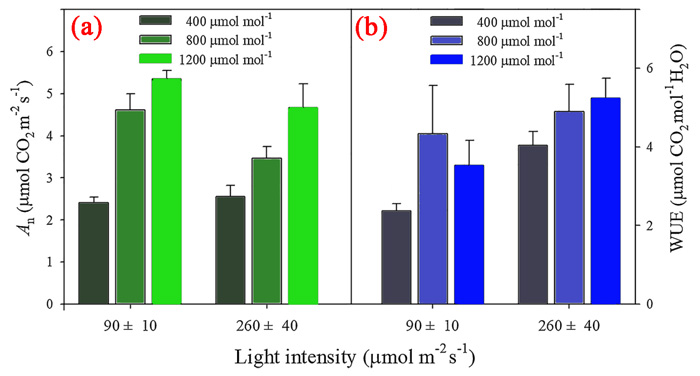| Tweet | Follow @co2science |
Paper Reviewed
Cho, A.R., Song, S.J., Chung, S.W. and Kim, Y.J. 2019. CO2 enrichment with higher light level improves flowering quality of Phalaenopsis Queen Beer 'Maneforn.' Scientia Horticulturae 247: 356-361.
Writing as background for their study, Cho et al. (2019) note that "the greenhouse industry has long recognized the value of enhancing photosynthesis by manipulating light and CO2 for improves success in plant cultivation." They also note that "maximizing the photosynthetic carbon fixation with optimal light level and CO2 concentration is important for optimal growth and flowering in Phalaenopsis [orchids]." Thus, it was their objective to examine the influence of these two parameters -- atmospheric CO2 concentration and light level -- on plant photosynthesis, growth and flowering percentage during the flowering stage of the Queen Beer 'Mantefon' orchid.
To accomplish their objective the four South Korean researchers subjected 20-month-old orchid plants (entering the flower induction stage of growth) to one of three different atmospheric CO2 concentrations (400, 800 or 1200 ppm) and one of two light intensities (90 ± 10 or 260 ± 40 µmol m-2 s-1, corresponding to low or high light levels, respectively) over a period of 16 weeks. Lighting treatments were applied from 0600 to 1800 hours each day and atmospheric CO2 treatment levels were maintained during the hours 0000 to 0600 (in the dark because they perform crassulacean acid metabolism -- CAM photosynthesis -- at night when their stomata are open). And what did the experiment reveal?
The six hours of atmospheric CO2 enrichment each day over the 16-week period was sufficient to stimulate orchid photosynthesis (see Figure 1a), spiking rates, spike length, production of floral buds and lateral branches, and plant water use efficiency (see Figure 1b). With respect to flowering percentages, none of the orchid plants produced flowers under the low light regime during the period of study. However, in the high light regime, the percent of plants flowering ranged from 0 at 400 ppm CO2, to 67 and 100 percent in the 800 and 1200 ppm CO2 treatments, respectively. Consequently, Cho et al. conclude that "CO2 enrichment combined with high light of 260 ± 40 µmol m-2 s-1 promotes the flowering quality of Phalaenopsis," adding that "CO2 enrichment under high light conditions may provide a means for producing high-quality Phalaenopsis Queen Beer 'Mantefon'." And such findings are great news for the commercial orchid market!

Figure 1. Net CO2 assimilation rate (An) (Panel a) and water use efficiency (WUE) (Panel b) of Phalaenopsis Queen Beer 'Mantefon' orchid plants grown under three atmospheric CO2 concentrations (400, 800 or 1200 µmol m-2 s-1) and two light intensities (90 ± 10 or 260 ± 40 µmol m-2 s-1) for 16 weeks. Adapted from Cho et al. (2019).




